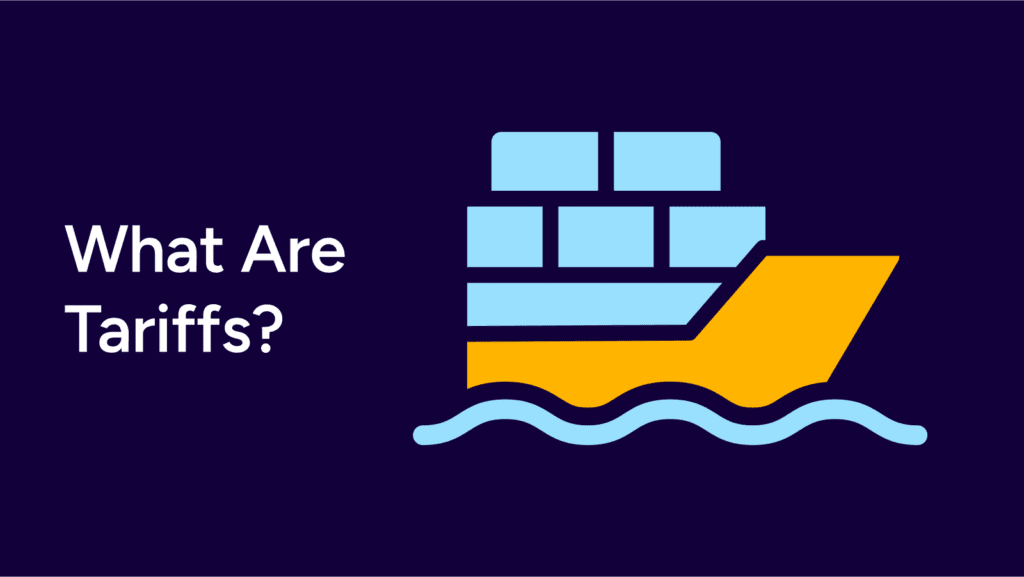
Recent changes to U. S. tariffs are reshaping the landscape of cross-border shipping, impacting both the cost and compliance requirements for businesses involved in international trade.
Last Updated Nov 13, 2025 – 4 min read


Recent changes to U.S. tariffs are reshaping the landscape of cross-border shipping, impacting both the cost and compliance requirements for businesses involved in international trade. We’re monitoring these developments closely to understand how they affect duties, de minimis thresholds, and broader logistics. For the most up-to-date and official information, we recommend referring to the White House’s fact sheet here.
In this blog, we’ll break down the fundamentals of tariffs and duties, their role in cross-border shipping, and the challenges businesses must navigate in an evolving trade landscape.
Shipping internationally—even between the U.S. and Canada—comes with its own unique hurdles. Terms like “tariffs,” “duties,” and “de minimis thresholds” can be confusing, but understanding them is critical for managing costs and ensuring smooth delivery. We’ll break down these core concepts so you can ship across borders with greater confidence.
Tariffs are government-imposed fees on imported goods from specific countries, often applied for a set period. Unlike duties, which are typically fixed and based on the product’s value and classification, tariffs are strategic tools used to influence trade behavior or protect domestic industries. Because they can be introduced or changed at any time, they add a layer of uncertainty to international shipping.
Tariffs influence everything from consumer prices to supply chain planning, making them a central issue in global commerce.
The term de minimis refers to a minimum value threshold under which import duties and tariffs are waived. If your shipment’s declared value falls below this threshold, your customer typically won’t owe additional import charges. This is especially beneficial for companies shipping smaller, lower-value goods—whether you’re a small apparel brand or a global retailer.
It’s important to remember that de minimis values aren’t universal. Some countries have generous thresholds, while others set them low—or don’t offer them at all. That’s why it’s essential to research the import rules of each destination country before shipping there.
These terms are often confused, but they refer to different types of charges:
While both are taxes, understanding the difference helps ensure accurate pricing and smoother communication with customers.
To help you predict shipping costs and avoid surprises, we recommend taking a look at GlobalPost’s Duty and Tax Calculator. This tool allows you to quickly estimate the applicable duties and taxes for your shipments. Just enter the item’s HS code, and you’ll get a clear view of what to expect. There’s also a free HS code lookup tool to make things even easier.
To avoid costly delays and compliance issues, follow these best practices:
No one likes getting an unexpected bill at the door. Surprise duties or taxes often lead to frustrated customers, refused deliveries, and negative reviews.
GlobalPost from Stamps.com, a hassle-free international carrier, helps solve this by offering Delivered Duty Paid (DDP) service, where all taxes and duties are prepaid by the shipper. This means your customers receive their orders without hidden fees—boosting satisfaction and reducing returns.
We’re here to help make international shipping easier and more manageable for our customers. When you choose Stamps.com for your international shipments, you gain access to:
By understanding tariffs, de minimis thresholds, and the difference between duties and taxes, and by leveraging the comprehensive international shipping solutions, you can confidently expand your reach and help ensure your important shipments arrive safely.
Delivery is made by the country's postal service in 3 - 5 business days, depending on the destination.
Generally, it takes Priority Mail International six to ten business days. USPS hands off shipments at the border of the destination country before the local postal service completes the delivery.
While price varies depending on weight and destination, rates for this service begin at $17 dollars.
UPS Worldwide Saver is faster than UPS Worldwide Expedited, offering delivery by the end of the next business day to major business centers, compared to 2-5 business days for Worldwide Expedited. Worldwide Saver provides a more economical alternative to premium express services while maintaining quick delivery.
UPS Worldwide Saver guarantees delivery by the end of the business day, one day faster than UPS Worldwide Expedited. This service connects major business centers in over 220 countries and territories with time-definite delivery and customs clearance included.
DHL Express is a premium international shipping service that offers fast, time-definite delivery to over 220 countries and territories. It's designed for urgent packages, with door-to-door tracking, customs support, and express delivery options for businesses and individuals.
Flat Rate Envelopes are ideal for documents or small, dense items weighing 4 lbs or less, as they offer a single price based on the destination country. For items between 4 lbs and 70 lbs, or those that don't fit into the Flat Rate Envelopes, you'll need to ship by weight using your own packaging. It’s more affordable to use Flat Rate boxes if your item is under 20 lbs.
Stamps.com makes international shipping easy by offering international services from USPS, UPS, and other carriers including GlobalPost. We make customs forms hassle free, so you can complete them online with ou guidance, and simply print to include with your international shipment.
Yes. Your packages may be inspected to ensure compliance, as USPS is very strict about what items qualify for Media Mail.